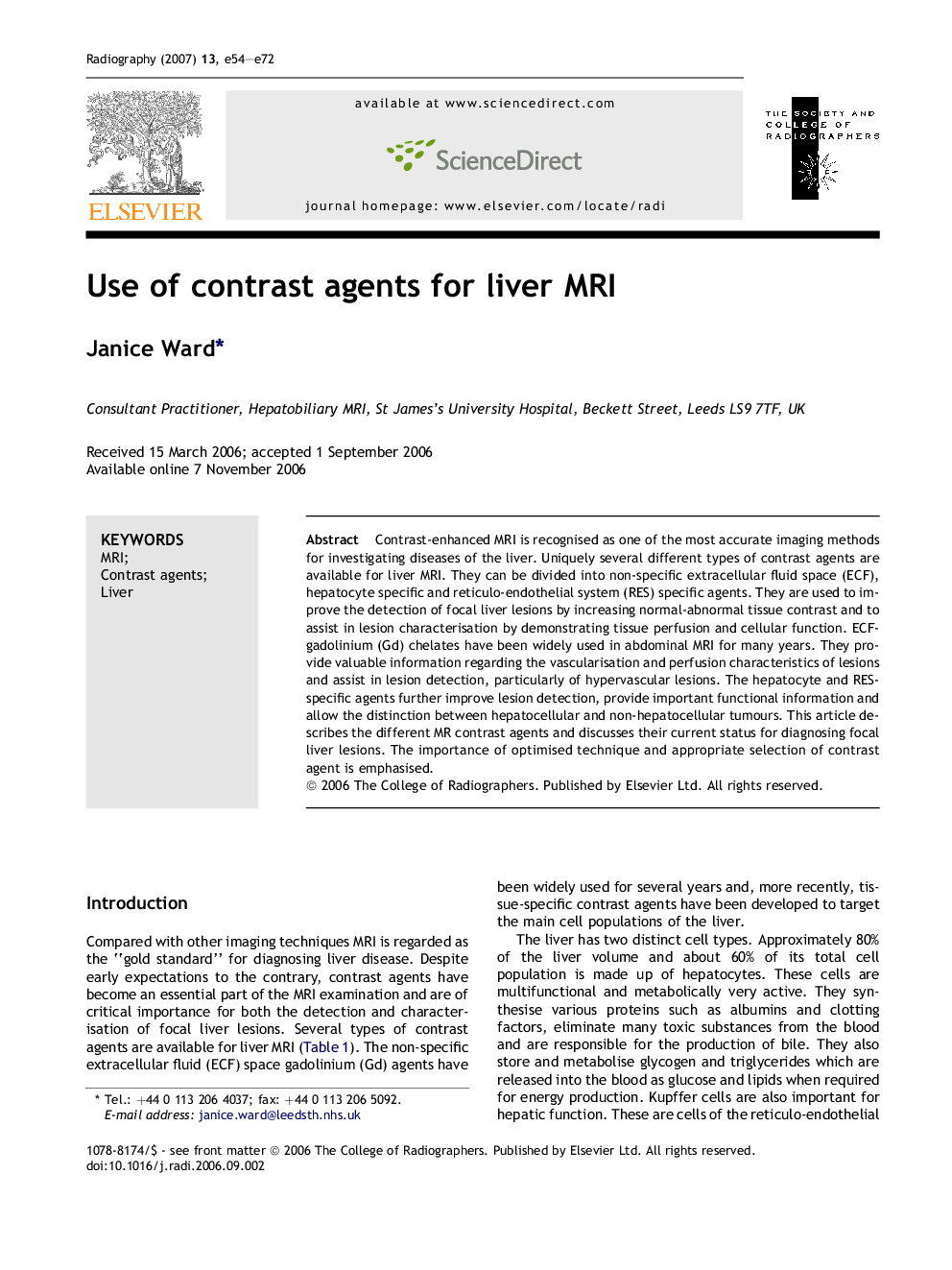| Article ID | Journal | Published Year | Pages | File Type |
|---|---|---|---|---|
| 2737606 | Radiography | 2007 | 19 Pages |
Contrast-enhanced MRI is recognised as one of the most accurate imaging methods for investigating diseases of the liver. Uniquely several different types of contrast agents are available for liver MRI. They can be divided into non-specific extracellular fluid space (ECF), hepatocyte specific and reticulo-endothelial system (RES) specific agents. They are used to improve the detection of focal liver lesions by increasing normal-abnormal tissue contrast and to assist in lesion characterisation by demonstrating tissue perfusion and cellular function. ECF-gadolinium (Gd) chelates have been widely used in abdominal MRI for many years. They provide valuable information regarding the vascularisation and perfusion characteristics of lesions and assist in lesion detection, particularly of hypervascular lesions. The hepatocyte and RES-specific agents further improve lesion detection, provide important functional information and allow the distinction between hepatocellular and non-hepatocellular tumours. This article describes the different MR contrast agents and discusses their current status for diagnosing focal liver lesions. The importance of optimised technique and appropriate selection of contrast agent is emphasised.
